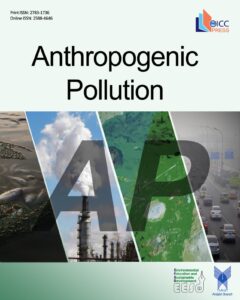Organic compound removal from textile wastewater by photocatalytic and sonocatalytic processes in the presence of copper oxide nanoparticles
Authors
-
Reza Fekri
 1
1
- Seyed-Ahmad Mirbagheri 2
-
Ebrahim Fataei
*
 3
3
-
Gholamreza Ebrahimzadeh-Rajaei
*
 4
4
-
Lobat Taghavi
 5
5
Abstract
The textile industry is one of the main consumers of water and the wastewater from this industry is one of the main sources of environmental contamination because they can release high levels of organic compounds into the environment. The chemical compounds of the wastewater, especially polycyclic aromatic hydrocarbons are highly carcinogenic and toxic and must be treated before release to the environment. Photocatalytic and sonocatalytic processes in the presence of metal oxide nanoparticles (NPs) are among the advanced oxidation processes (AOPs) which have found increasing popularity due to their high efficiency and no secondary contamination. In this research, CuO NPs were first synthesized using Peganum harmala seed extract. The samples were then evaluated by SEM, XRD, and EDX tests. The degradation efficiency of organic compounds in textile wastewater was explored by photocatalytic and sonocatalytic processes in the presence of copper oxide NPs. The results indicated that the crystallites of the spherical CuO NPs have an average size of 84 nm. According to GC-MS results, decane, undecane, dodecane, naphthalene, decahydro-2,3-dimethyl, methylmethylenecyclohexane, decahydro-1,5-dimethyl, tridecane, tetradecane, and hexadecane composed about 73% of the initial wastewater sample. 100% of 2-methylmethylenecyclohexane, naphthalene, decahydro-1,5-dimethyl, hexadecane, and decahydro-2,3-dimethyl were eliminated by photocatalytic process. The highest (84%) and lowest (52%) sonocatalytic degradation were reported for naphthalene and/or decahydro-2,3-dimethyl, and dodecane, respectively. These values reached about 100% in photocatalytic degradation. UV waves were generally more efficient at removing organic compounds than US treatment.



